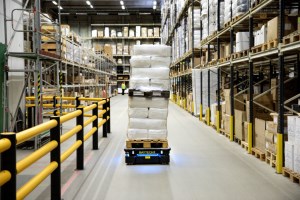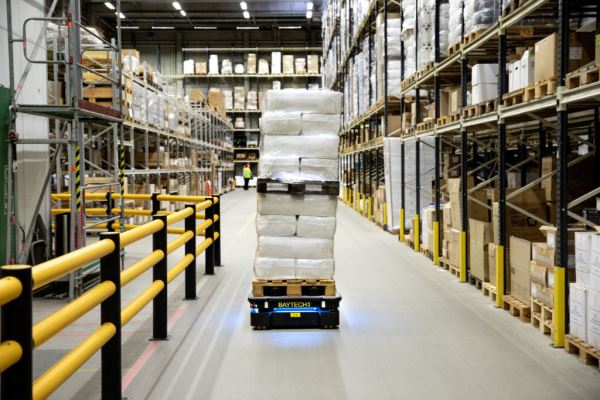In 2020, efficient and scalable intralogistics is essential to Australia’s way of life.
Intralogistics is the optimisation, integration, automation, and management of the logistical flow of information and material goods in fulfillment and distribution centres.
Over the past five years, the increase of industrial robotics in production caused the global operational stock to rise by 65 per cent to 2.4 million units (2013-2018), according to the International Federation of Robotics (IFR).
In fact, 62 per cent of warehouse and logistics organisations are considering implementing autonomous mobile robots (AMRs) according to a recent study by Konica Minolta. Three key areas of priority emerged from the research: safety; productivity; and customer satisfaction.
AMRs are a significant innovation in the intralogistics sector which has long been dominated by forklifts, conveyors and automated guided vehicles (AGVs). AMRs offer efficiency, safety and cost benefits relative to their predecessors.
The recent pressure on supply chains and increased demand on delivery infrastructure exposed by COVID-19 is likely to evolve into a more permanent shift in consumer and commercial behaviours.
This once-in-a-lifetime event has only served to compound the evolution seen through the 2010’s; increasing e-commerce and on-demand consumer attitudes.
Increased demand for critical items
The pandemic brought entire sections of the Australian economy to a halt. The industry has seen factory closures, increased demand for critical items and production suspensions, which is disrupting global supply chains and leading to shortages of critical goods and services.
In the wake of COVID-19, many organisations have taken significant steps towards reshoring supply to reduce their exposure to offshore vulnerabilities. Warehousing and logistics productivity is essential in keeping Australia’s supply chains operating.
With unpredictable events such as pandemics or trade wars, offshore manufacturing facilities, warehouses and distribution centres are at great risk of low productivity and not being able to fulfil basic market needs.
It is envisioned that COVID-19 will be the impetus for rapid growth in AMR adoption in the Australian market.
Safety
Almost 50 per cent of respondents in the Konica Minolta survey cited safety as their primary consideration for implementing AMRs. Removing the need for human intervention in transporting goods around warehouses is a key driver in reducing health and safety risks and improving safety records.
AMRs are uniquely placed to remove two types of workplace risks: body stressing associated with pushing, pulling, and lifting – and the risk of pedestrians being hit by moving objects such as forklifts.
Productivity
In the survey, 70 per cent of logistics and operations managers said increasing productivity was their top priority in 2020. As pressure and demand on the Australian logistics sector increases, many businesses find themselves dealing with shrinking margins and changing regulations. For this reason, productivity is vital for survival. The adoption of automation technologies, including AMRs, is an avenue to increase competitiveness in a volatile business environment.
Customer satisfaction
Just over 55 percent of senior executives surveyed said customer experience was their number one priority. With next-day and even same-day delivery becoming the expectation, customer satisfaction has become a key differentiator for logistics operators. Those who can deliver faster and more accurately are set to prosper. A more automated warehouse reduces human error and improves reaction and despatch time, leading to greater customer satisfaction.
Overall, it is clear the sector is actively rethinking automation. This is to cope with future challenges, to achieve a competitive edge and future-proof their businesses. The logistics and warehousing landscape is set to look very different in the coming decade with AMRs and humans working collaboratively in a warehouse environment.
There has never been a better time to innovate and the next decade brings even greater opportunity for warehouse and logistics sector.
Those that succeed will be underpinned by innovation, automation and investment in technology-driven supply chain solutions.
Martin Keetels is national manager of robotics and innovation, Konica Minolta


